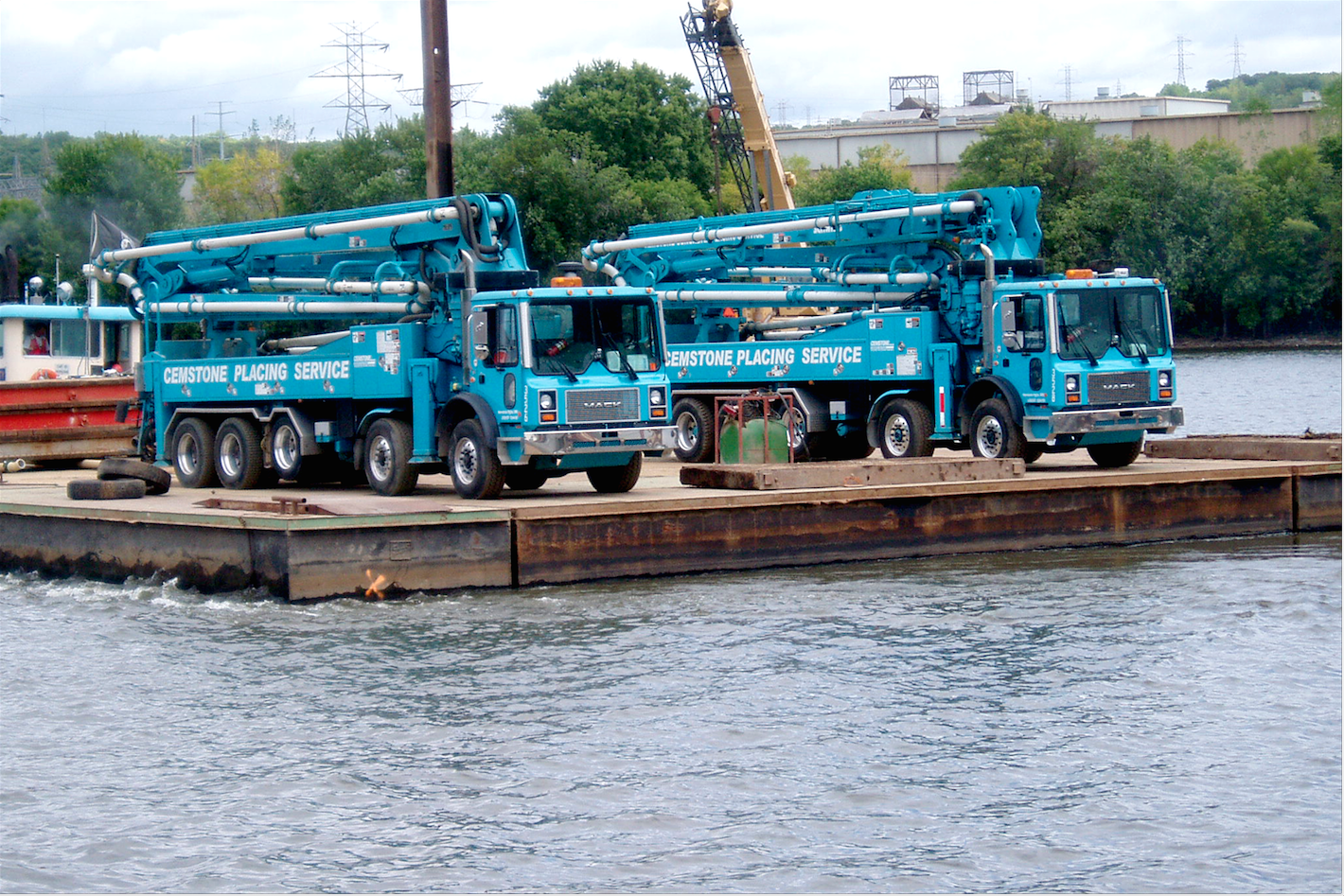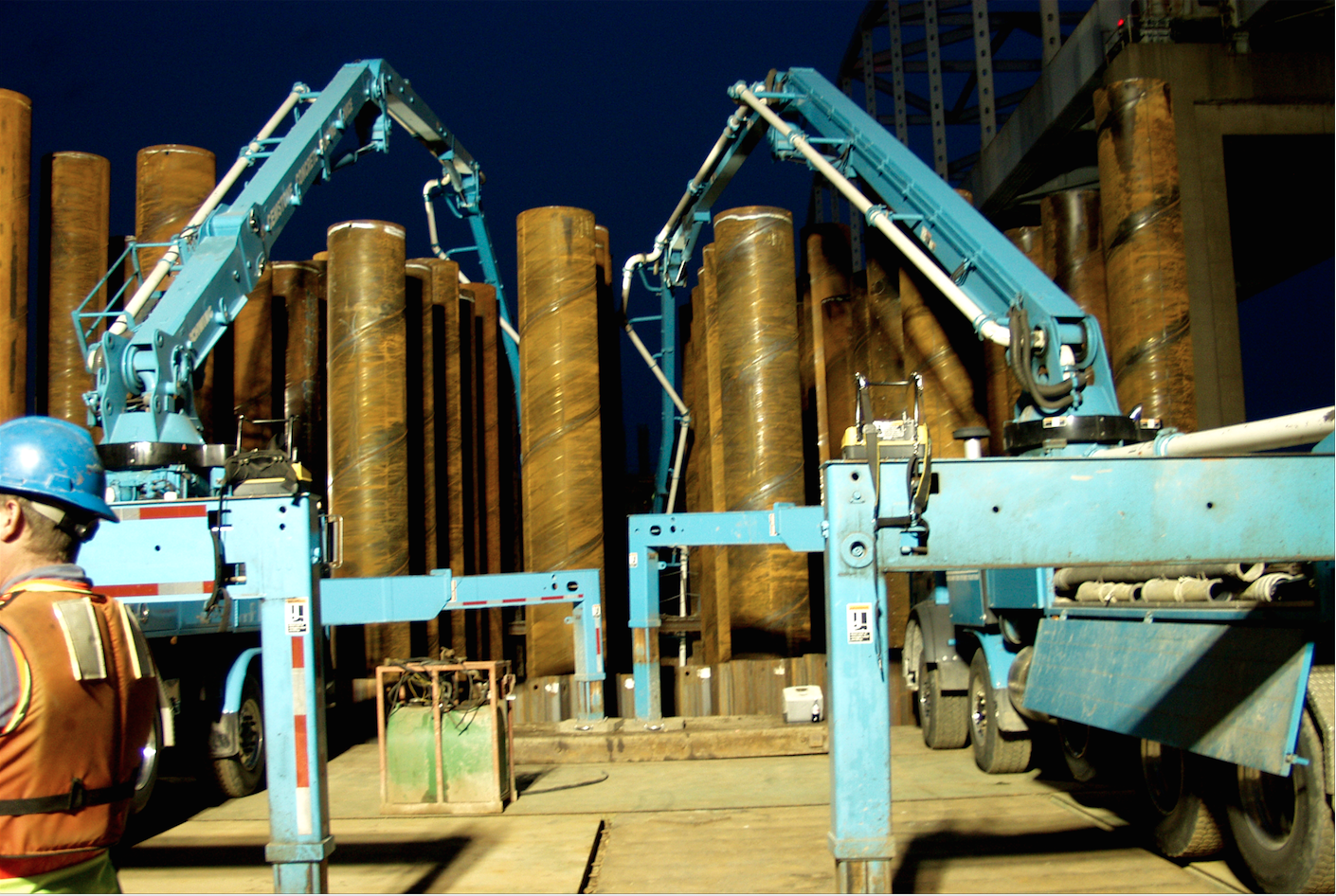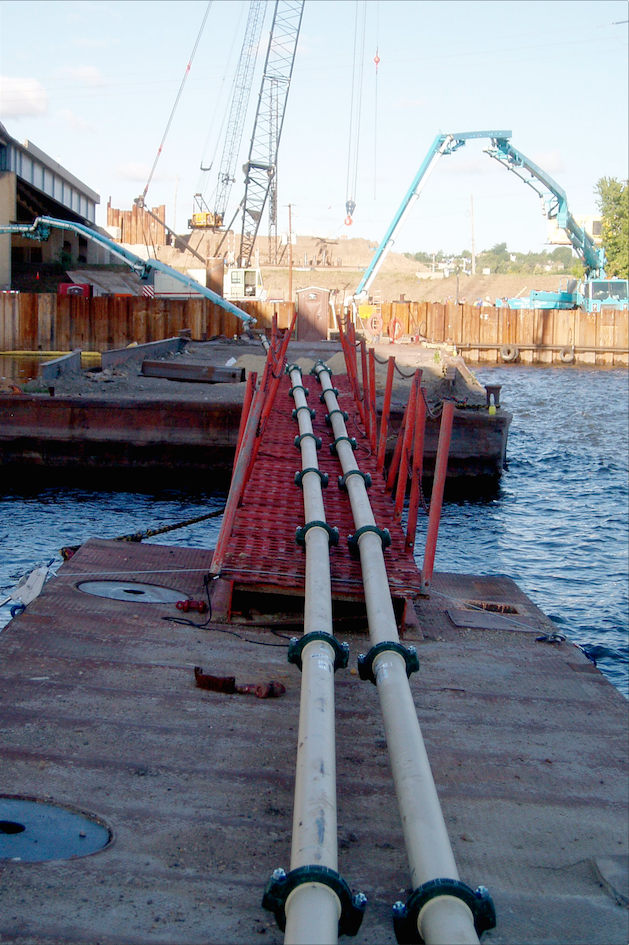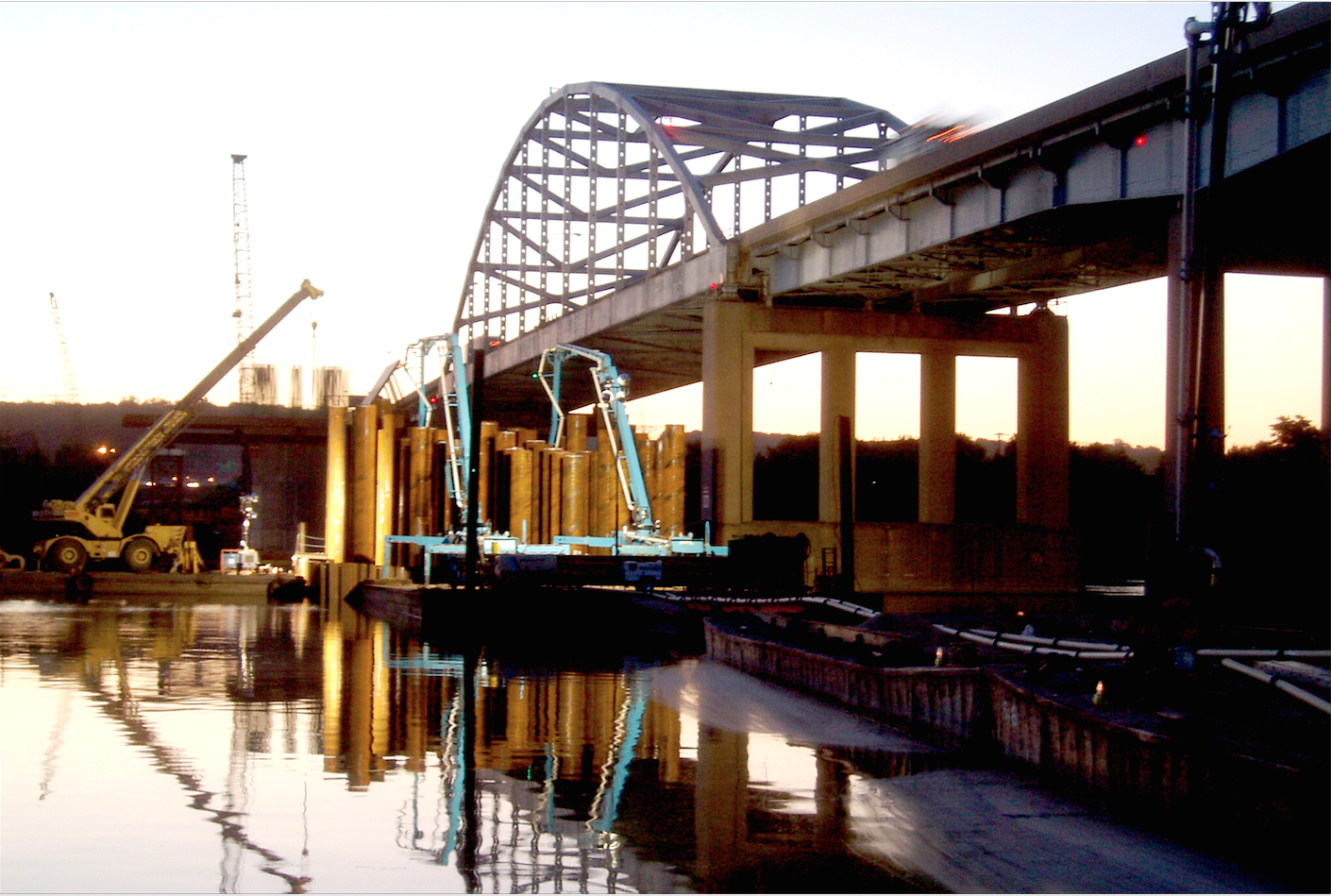CEMSTONE AND SCHWING PUMP THROUGH CHALLENGES ON BRIDGE PROJECT SPANNING THE MISSISSIPPI

In April of 2002, the Minnesota DOT awarded contracts for the complete reconstruction of I-494 and Highway 61 in the southeast St. Paul metropolitan area of Minnesota. The project includes a complete overhaul of the Wakota Bridge, a 4-lane, 466-foot span crossing the Mississippi River. Cemstone, Inc., Mendota Heights, MN, has been supplying ready mix and pumping equipment since May of 2003 to general contractors awarded work on the massive project. Since the beginning, Cemstone has had to meet challenging inter-river pier pours, complicated mix designs and traffic issues head-on.
The $205 million effort involves widening the bridge from two to five lanes in each direction, the construction of adjoining ramps and railroad bridges, and the addition of a new pedestrian/bicycle trail. The main span of the Wakota bridge is the 8th longest in the state, and at 5 lanes in each direction it will become the widest bridge in Minnesota in terms of total lanes.
Dave Pace, Vice President Ready Mix Sales, says Cemstone was awarded the contract because of their “Mass Concrete Specification” experience. “We have provided both pumping and concrete to several Twin Cities projects that had similar mass concrete specifications as the Wakota project,” said Pace. Originally a pumper for the Midwest’s residential market, Cemstone has taken their pumping division to a new level. The contractor currently owns 15 Schwing boom pumps and boasts an extensive resume ranging from tunnel and bridge work to structural slabs.
Designers and contractors elected the Segmental Box Girder method to construct the new bridge due to the massive span over the main Mississippi River channel. Concrete construction began on May 6, 2003, when Cemstone made their first pour. One portion of the three contracts involves an estimated 100,000 cubic yards of pumped concrete. On site nearly every day, Cemstone operators have utilized KVM 39 X and S 47 SX truck-mounted concrete boom pumps to complete pours, including those involving the river piers.
Pace says one of the main challenges on the project involves getting the concrete to the river piers. Innovative thinking, a large pumping fleet and an ample operator roster led the contractor to the answer. For a typical river pier pour, crews set up one 39-meter pump on the shore of the Mississippi River to receive ready mix supply from Cemstone trucks. The concrete is pumped through a slick line laid out on several barges tied together. Another 39-meter boom pump is set up on a barge and floated to the site. The slick line is directly connected to the boom on the barge. Daryl Gagnan with Cemstone’s Placing Division estimates that the total length of the slickline and the 105-foot booms, crews are running concrete at least 450 feet out into the river, enough to reach the middle pier. “We’ll end up doing a total of 12 pours on that pier,” said Gagnan.
When the construction schedule called for completion of the middle pier footing in September of 2003, Cemstone set-up two 39-meter pumps on the shore and two on the barge, using the same procedure as river pier pours.
“There’s a lot of concrete going into this thing,” said Gagnan. Right now we’re just focusing on the quality of the foundation. Footings, piers, pier tables, ice breakers…you can’t put up the house until you’ve got a rock solid foundation.” Specs are continuously changing, and Gagnan says no pour is typical. “On any given day, a 39-meter pump could be completing a 60 yard pile pour, or a 47-meter is on site for an 1800-yard pier table pour,” said Gagnan. At this point in the project, Pace estimates that Cemstone has placed less than 5% of the total 100,000 yards.
Pace also discussed the challenges behind meeting the mass concrete specifications. Before concrete is placed, contractors develop theoretical models of mix performance with computer software by predicting the generation of heat in the middle of massive concrete structures. Once on site, DOT officials and Cemstone crews monitor the delivery, placement and curing of the concrete on the basis that the information and jobsite conditions used in the theoretical model are the same when the actual concrete is placed. Pace also says the mass concrete specifications include a maximum heat generated specification that involves using cementitious materials other than Portland cement such as slag, fly ash and admixtures. This forces mix designers to slow down the heat of hydration while trying to maintain the construction schedule.
Pace also emphasized the need for the new bridge when he discussed the day-to-day traffic challenges. “When you’re delivering a perishable product like ready mix concrete, you only have a certain amount of time to get it placed in the forms. Anyone who’s ever been on Highway 494 westbound in the morning or eastbound in the afternoon near the bridge can tell you what a huge problem traffic is in that area. And access to the west side of the river where our pumps are set up has its own problems. Trains run parallel to the river at Highway 494, and are several cars long. They can run about 12 to 15 times a day. All of these factors hold up delivery. One train alone can delay a truck mixer 30 minutes or more, making pump reliability critical. With obstacles like these, the last thing we need are pump problems. Our Schwings never let us down.”
Cemstone has been utilizing two batch plants to supply loads to the trucks, one at a permanent location in the Twin Cities and a portable plant that has served as their primary source. When production calls for it, Cemstone uses two St. Paul-based plants as back-ups.








